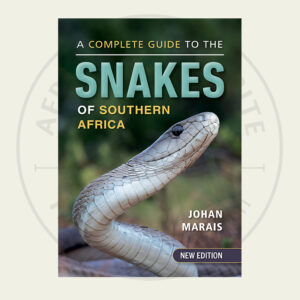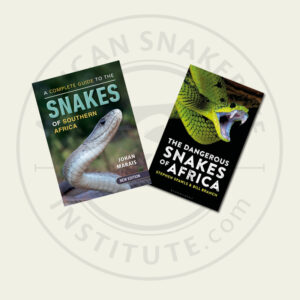Want to attend the course but can’t make it on this date?
Fill in your details below and we’ll notify you when we next present a course in this area:
Many people ask about snake distribution and how distribution maps are compiled. A number of people claim to see a certain snake in a particular area and are quite disgruntled when we point out that the claimed species does not occur in that locality.
Snake identification is not easy, and many snakes are easily misidentified. Most black snakes are thought to be Black Mambas, and green snakes are thought to be Boomslang or Green Mambas. Many species have a preferred temperature range that they occupy. For example, Black Mambas prefer hot tropical bushveld or savanna. Where there are cold grasslands with frost in the winters, mambas do not generally occur there. The opposite is true for Berg Adders that prefer cooler mountain tops, often with snow in the winter. They will not be found in hot tropical bushveld. Other factors that influence distribution include humidity, altitude, vegetation, soil types and available prey.
This understanding of a species preference for habitat and climate is based on records of where the snake has been sighted and positively identified by a reptile scientist. This has allowed us to compile distribution maps.
Here’s a breakdown of the process:
This is the foundation of a distribution map. Sources include:
Raw sightings need verification to ensure that they are accurate:
Once reliable data points are gathered, mapping begins. This usually incorporates using some ecological data points such as geology, temperatures, rainfall, biome, habitat and elevation. We can then compile predictive maps for where a species should occur based on all these data that match where the species has been found. These are simple maps and may not be extremely accurate but give a very good general indication of where a species occurs. As more distributional records of snakes come available, the maps are updated. For example, Brown Forest Cobras (Naja subfulva) were thought to only occur in coastal KwaZulu-Natal extending into Mozambique and just entering the montane forests of Eastern Zimbabwe. However, in recent years a some observations have been made around Pafuri in northern Kruger National Park and the eastern Soutpansberg mountains where individuals were seen and photographed. This species was overlooked in these areas for many years. The maps now include these regions as being part of the distribution of this snake.
Final Use
Distribution maps are incredibly useful when making identifications and many species can be eliminated as they don’t occur in an area where the observation was made. These maps are commonly used in:
So, although the maps are always a work in progress, they are based on scientific data and are not just a guess of where a species occurs. As more observations of snakes are made, the maps are improved and we have a better understanding of the distribution of a species. Finding a snake well out of range, especially large cobras or mambas, is unlikely and we are often told of Green Mambas occurring in the Kruger National Park, Mpumalanga or even Limpopo. They do not occur there.

CONTACT US:
Product enquiries:
Caylen White
+27 60 957 2713
info@asiorg.co.za
Public Courses and Corporate training:
Michelle Pretorius
+27 64 704 7229
courses@asiorg.co.za
 A Complete Guide to the Snakes of Southern Africa - 2022 Edition
R550.00
A Complete Guide to the Snakes of Southern Africa - 2022 Edition
R550.00
 Rangers Book Combo 1
Rangers Book Combo 1
 ASI Book Combo 1
ASI Book Combo 1
Want to attend the course but can’t make it on this date?
Fill in your details below and we’ll notify you when we next present a course in this area:
Want to attend the course but can’t make it on this date?
Fill in your details below and we’ll notify you when we next present a course in this area:
Want to attend the course but can’t make it on this date?
Fill in your details below and we’ll notify you when we next present a course in this area:
Want to attend the course but can’t make it on this date?
Fill in your details below and we’ll notify you when we next present a course in this area:
Want to attend the course but can’t make it on this date?
Fill in your details below and we’ll notify you when we next present a course in this area:
Want to attend the course but can’t make it on this date?
Fill in your details below and we’ll notify you when we next present a course in this area:
Want to attend the course but can’t make it on this date?
Fill in your details below and we’ll notify you when we next present a course in this area:
Want to attend the course but can’t make it on this date?
Fill in your details below and we’ll notify you when we next present a course in this area:
Want to attend the course but can’t make it on this date?
Fill in your details below and we’ll notify you when we next present a course in this area:
Sign up to have our free monthly newsletter delivered to your inbox:
Before you download this resource, please enter your details:
Before you download this resource, would you like to join our email newsletter list?